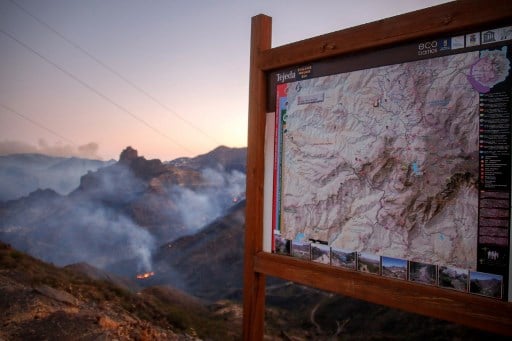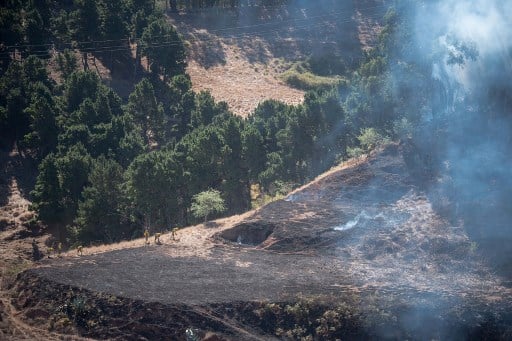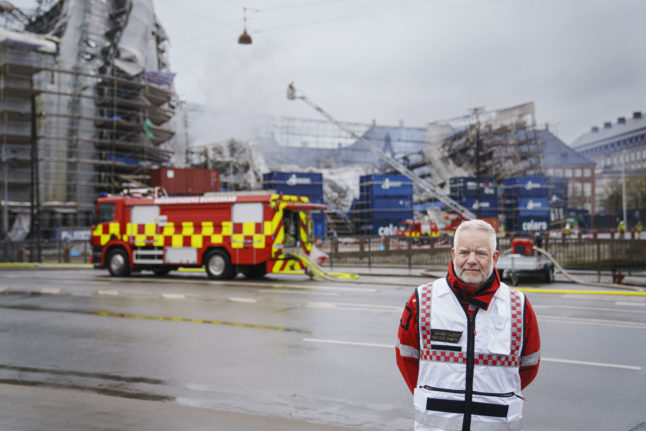Flames as high as 50 metres (160 feet) had complicated the battle against the blaze burning since Saturday on the western slopes of the volcanic island located off northwest Africa, prompting the evacuation of several villages with a combined population of around 10,000.
But as winds fell on Tuesday, the fire was beginning to “stabilise” and residents were returning home, Canary Islands President Torres said in a tweet.
A punto de amanecer,buenas noticias sobre el incendio de Gran Canaria. Me trasladan los técnicos, tras visitar en la noche las zonas , que el incendio remite, que no ha entrado en Inagua y pierde potencial. Los medios aéreos, listos para actuar. #IFGranCanaria #IFVallesco
— Ángel Víctor Torres (@avtorresp) August 20, 2019
“The degree of severity we initially expected is much lower, which is very good news,” Federico Grillo, the island's chief of emergency services, told reporters.
The decline in wind speeds prevented the blaze, Spain's worst wildfire this year, from entering the Inagua national reserve, which is home to the blue chaffinch, a rare native bird species.
There are only some 400 blue chaffinches left. Inagua was partly destroyed in another major fire in 2007.
The flames did enter Tamadaba, a national park north of Inagua, which is considered the “green lungs” of the island that lies at the heart of the Canary archipelago, but local officials said there was less damage than initially feared.
Many of the pine trees in the park “remain intact”, Torres told news radio Cadena Ser.
“There was a miracle last night,” he added.

'Less destructive'
Some 700 firefighters and other crew backed by 16 water-dropping helicopters and planes were working on controlling the blaze, which is estimated to have destroyed 10,000 hectares (25,000 acres), according to emergency services.
No fatalities have been reported and tourism on Gran Canaria, which is concentrated on its coast, has not been affected.
Two other fires hit the island's centre last week without causing any injuries.
“Tamadaba is one of the great reservoirs of biodiversity in Gran Canaria,” Manuel Nogales of the Spanish National Research Council told AFP.
The park consists of 7,500 hectares of protected area made up of valleys, slopes and mountains that are home to some 30 plant species that can only be found on the island.
While the flames spread to the eastern part of the park, an area of young pine trees, the fire was “more superficial, less destructive” in the older forests in the rest of Tamadaba, Nogales said.

'Take some time'
But Juli Caujape, the director of the island's Viera y Clavijo botanical garden said the fire may have affected “the last stretch of laurel forest” in Gran Canaria.
“Tamadaba is a hotspot for biodiversity. There are many species of plants, vertebrates, insects, fungi and microorganisms only found in the park,” he told AFP.
Efforts had been made in recent years to reintroduce the laurel pigeon, a species of bird that is endemic to the Canary Islands but which had disappeared from Gran Canaria, and there are fears that the fire may have destroyed its habitat, Caujape said.
Nogales said the native pine species evolved on the island's volcanic terrain and are “very well adapted to fire” so they will recover easily.
“We don't have to worry too much about the pine trees. What is worrying is the rest of the species of the ecosystem,” added Caujape.
“The pines will become green again soon but the rest of the vegetation will take some time to re-emerge and the majority of the fauna won't return until the ground cover is restored.”
By Desiree Martin with Daniel Bosque / AFP
READ MORE: 'It's unstoppable': What you need to know about the Gran Canaria wildfire



 Please whitelist us to continue reading.
Please whitelist us to continue reading.
Member comments